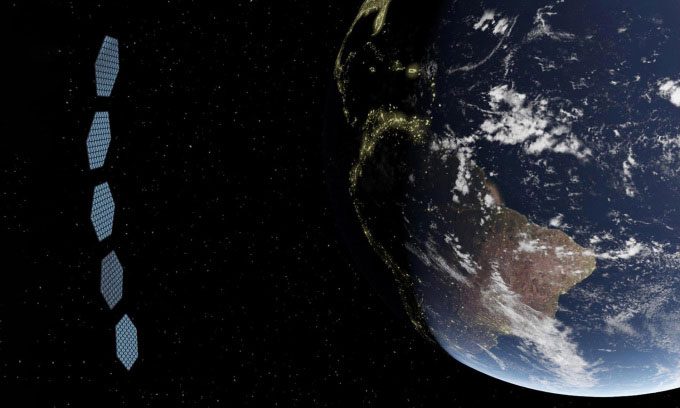A group of scientists from Scotland has proposed the deployment of large mirror systems in orbit to direct sunlight down to solar farms on Earth.
Electricity demand typically peaks in the early morning and late evening when solar panels are less effective. According to researchers at the University of Glasgow, Scotland, the cost of launching into orbit is decreasing, making the placement of giant reflective mirrors in space a viable method to enhance electricity generation during these times, as reported by New Atlas on January 15. The new study was published in the journal Advances in Space Research.

Orbital reflective mirror systems could provide additional solar energy to Earth. (Photo: Andrea Viale/University of Glasgow/NASA).
This can be seen as another method of producing solar energy from space. Instead of placing giant photovoltaic panels in the sky and trying to transmit energy back to Earth, the research team proposes placing large mirror structures in orbit to reflect additional sunlight down, which can then be harnessed by ground-based facilities. They have named this project Solspace.
Specifically, the team of experts plans to launch reflective satellites into a geostationary orbit. This satellite system will pass over nearly the same land area every day. The selected land area will be chosen so that the reflective satellites can be observed by as many large solar farms on the ground as possible.
Each satellite will deploy a hexagonal reflector made from aluminum-coated Kapton, with each side measuring 250 meters, totaling an area of 162,380 m2. These reflective mirrors can be adjusted in orientation while in orbit, allowing them to capture sunlight and direct it towards solar panels on the ground.
The reflective mirrors will be positioned at an orbital height of approximately 900 kilometers, which is nearly twice the altitude of the International Space Station (ISS). The research team states that each pass can illuminate a ground area of 10 km2 for about 17 minutes, delivering approximately 34 – 36 MWh of additional electricity per pass. This amount of electricity is equivalent to the annual consumption of an average household in the UK.
The Solspace satellites will shine light down onto solar panels on the ground for the appropriate duration, then rotate to reflect sunlight back into space. They will readjust their orientation as they fly over the next solar farm. If there are five reflective satellites and the route is designed so that they pass over 13 large solar farms each day, the system could provide up to 284 MWh of solar electricity daily.


















































